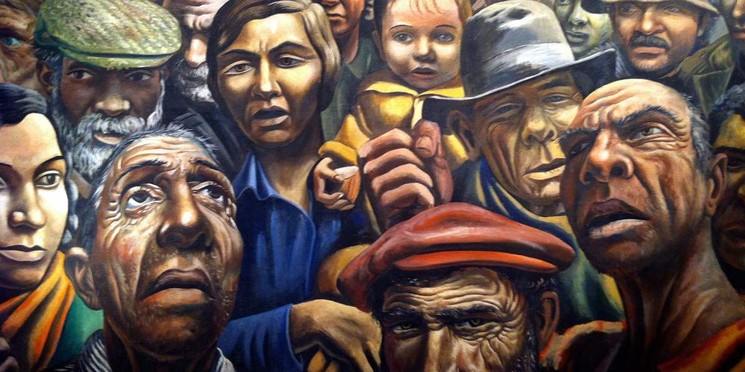
Biography
Argentinian artist Delesio Antonio Berni is best known for his figurative works. In his art, he drew attention to social problems that are both timeless and universal. The artist was prominently involved Nuevo Realismo movement. Today a number of his paintings, collages, and prints are part of prominent private and public collections, including MAAM Fundación Museo de Arte Americano de Maldonado in Uruguay, the Museum of Modern Art (MoMA), New York City, MUNTREF - Museo de la Universidad Nacional de Tres de Febrero in Buenos Aires, Museum of Latin American Art (MOLAA) in Long Beach and Museo de Arte Moderno de Bogotá in Bogotá, to name a few.
Antonio Berni was born in 1905 in Rosario, Argentina. From a young age, he showed an exceptional aptitude for art, and in 1914 he began studying with N. Bruxadera at the Buxadera and Co. stained glass company. As a child prodigy, he studied painting at Rosario Catalá Center and, in 1920, showcased his work at an exhibition at the Salon Mari. After he received a scholarship in 1925, Berni traveled to Madrid and later Paris, where he was mentored by artists Othon Friesz and André Lhote. While in France, he became fascinated with politics, Surrealist movements, and writings by Sigmund Freud. Their influence can be best seen in his earliest works, such as the painting entitled (1932).
Upon his return to Argentina, he formed with several other artists the Nuevo Realismo ("New Realism") group and abandoned surrealism in favor of Social Realism, as it did not truly capture the struggles of the Argentine people.
Inspired by Mexican murals, especially after collaborating with Mexican painter David Alfaro Siqueiro, Berni began creating large-scale works. However, he quickly abandoned the murals for canvas, as he did not feel it was the right medium to inspire social change. One of the examples of his realistic paintings is (1934). Berni felt that there was a growing disconnect between the people and art and that the artist's job was to mirror the country's social atmosphere. In 1941, he sought a deeper understanding of native cultures, so he traveled to Colombia, Bolivia, Perú, and Ecuador.
One of Berni's best-known works in the series of paintings created in the 1950s that follow the life of a fictional boy Juanito Laguna, such as and . They were created from discarded found materials.
In 1962 Antonio Berni won the Grand Prix for Printmaking at the Venice Biennale. Throughout his career, the artist showcased his work worldwide, and in 1965 the Instituto Di Tella organized a retrospective of his work that traveled to the US. Berni said:
Antonio Berni passed away in 1981. In 2023 his work was shown in a group exhibition in Malba at Fundación Malba in Buenos Aires, and (2019) at the Museum of Fine Arts Houston.
Nationality